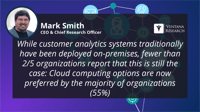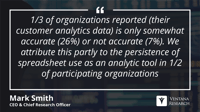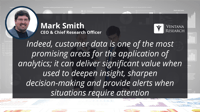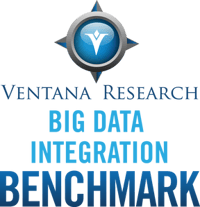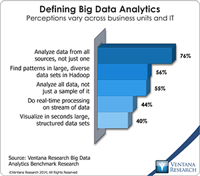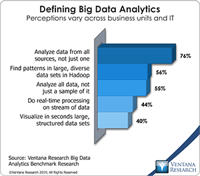The annual Ventana Research Digital Innovation Awards showcase advances in the productivity and potential of business applications, as well as technology that contributes significantly to the improved processes and performance of an organization. Our goal is to recognize technology and vendors that have introduced noteworthy digital innovations to advance business and IT.
Read More
Topics:
Sales,
Customer Experience,
Human Capital Management,
Marketing,
Office of Finance,
Voice of the Customer,
Continuous Planning,
embedded analytics,
Learning Management,
Analytics,
Business Intelligence,
Collaboration,
Data Governance,
Data Preparation,
Information Management,
Internet of Things,
Business Planning,
Contact Center,
Data,
Product Information Management,
Sales Performance Management,
Workforce Management,
Financial Performance Management,
Price and Revenue Management,
Digital Technology,
Digital Marketing,
Digital Commerce,
Operations & Supply Chain,
Enterprise Resource Planning,
ERP and Continuous Accounting,
Revenue,
blockchain,
natural language processing,
data lakes,
Total Compensation Management,
robotic finance,
Predictive Planning,
employee experience,
candidate engagement,
Conversational Computing,
Continuous Payroll,
collaborative computing,
mobile computing,
continuous supply chain,
Subscription Management,
agent management,
extended reality,
intelligent marketing,
sales enablement,
work experience management,
lease and tax accounting,
AI & Machine Learning,
robotic automation
Supercharging the customer experience (CX) is more than just an opportunity. It’s essential for every organization that looks to optimize engagement at every moment of the customer journey. In times such as these, when business continuity is a top priority, organizations must address the customer experience, especially if it has not been a focal point of the executive team.
Read More
Topics:
Sales,
Customer Experience,
Human Capital Management,
Marketing,
Office of Finance,
Voice of the Customer,
Analytics,
Collaboration,
Data Governance,
Data Preparation,
Information Management,
Internet of Things,
Contact Center,
Data,
Digital Technology,
Digital Commerce,
Operations & Supply Chain,
Intelligent CX,
Conversational Computing
For interactions with customers to go well, organizations must manage an ever-increasing array of engagement channels. Our research finds that organizations expect to see interaction volumes increase on all channels, especially digital ones such as text-based messaging, chat, mobile and social apps. Unfortunately, the systems that manage these channels are typically disparate and uncoordinated and may not use the same underlying technology. This makes it difficult for organizations to...
Read More
Topics:
Customer Experience,
Voice of the Customer,
business intelligence,
embedded analytics,
Analytics,
Collaboration,
Data Governance,
Data Preparation,
Information Management,
Internet of Things,
Contact Center,
Data,
Digital Technology,
Digital Commerce,
blockchain,
natural language processing,
data lakes,
Intelligent CX,
Subscription Management,
agent management,
extended reality,
AI & Machine Learning
Using customer analytics effectively involves several challenges. Organizations must make it a business priority, cultivate leadership and set a course for ensuring data and analytics are being processed and governed effectively. But effectiveness also requires technology that will assist in the effective operations and management of customers and help an organization achieve its goals.
Read More
Topics:
Customer Experience,
Voice of the Customer,
business intelligence,
embedded analytics,
Analytics,
Collaboration,
Data Governance,
Data Preparation,
Information Management,
Contact Center,
Data,
Digital Technology,
Digital Commerce,
blockchain,
natural language processing,
data lakes,
Intelligent CX,
Conversational Computing,
collaborative computing,
mobile computing,
Subscription Management,
agent management,
extended reality,
AI & Machine Learning
Customer analytics have never been more important, but effectively creating and managing them is not easy. The data that’s required to achieve visibility into all customer activity involves many applications and systems and it’s a challenge to ensure the data used is accurate and consistent. Even once data is assembled, organizations often struggle to apply analytics to create the metrics that best represent an understanding of the past and, more importantly, the path to the future.
Read More
Topics:
Customer Experience,
Voice of the Customer,
embedded analytics,
Analytics,
Business Intelligence,
Collaboration,
Data Governance,
Data Preparation,
Information Management,
Contact Center,
Data,
Digital Technology,
Digital Commerce,
blockchain,
natural language processing,
data lakes,
Intelligent CX,
Conversational Computing,
collaborative computing,
Subscription Management,
agent management,
extended reality,
AI & Machine Learning
Today’s intense competition requires that companies know as much as they can about their customers in order to anticipate their needs and deliver a superior customer experience. However, many organizations struggle to do this well. Implementing initiatives to improve customer value across any department or process involving customers requires both in-depth visibility into current operations and excellent metrics.
Read More
Topics:
Customer Experience,
Voice of the Customer,
business intelligence,
embedded analytics,
Analytics,
Collaboration,
Data Governance,
Data Preparation,
Information Management,
Internet of Things,
Contact Center,
Data,
Digital Technology,
Digital Commerce,
blockchain,
natural language processing,
data lakes,
Intelligent CX,
Conversational Computing,
collaborative computing,
mobile computing,
Subscription Management,
agent management,
extended reality,
AI & Machine Learning
Big data has become a big deal as the technology industry has invested tens of billions of dollars to create the next generation of databases and data processing. After the accompanying flood of new categories and marketing terminology from vendors, most in the IT community are now beginning to understand the potential of big data. Ventana Research thoroughly covered the evolving state of the big data and information optimization sector in 2014 and will continue this research in 2015 and...
Read More
Topics:
Big Data,
MapR,
Predictive Analytics,
SAP,
Human Capital,
Mulesoft,
Operational Performance Management (OPM),
Paxata,
SnapLogic,
Splunk,
Business Analytics,
Business Intelligence,
Cloud Computing,
Cloudera,
Hortonworks,
IBM,
Informatica,
Information Management,
Operational Intelligence,
Oracle,
Business Performance Management (BPM),
Customer Performance Management (CPM),
Datawatch,
Dell Boomi,
Financial Performance Management (FPM),
Information Management (IM),
Information Optimization,
Sales Performance Management (SPM),
Savi,
Sumo Logic,
Supply Chain Performance Management (SCPM),
Tamr,
Trifacta,
Strata+Hadoop
The market for big data continues to grow as organizations try to extract business value from their own masses of data and other sources. Earlier this year I outlined the dynamics of the business opportunity for big data and information optimization. We continue to see advances as big data and associated information technologies deliver more value, but the range of innovation also has created fragmentation among existing systems including databases that are managed onpremises or in cloud...
Read More
Topics:
Big Data,
Business Analytics,
Information Management,
Information Applications (IA),
Information Management (IM),
Information Optimization
Teradata continues to expand its information management and analytics technology for big data to meet growing demand. My analysis last year discussed Teradata’s approach to big data in the context of its distributed computing and data architecture. I recently got an update on the company’s strategy and products at the annual Teradata analyst summit. Our big data analytics research finds that a broad approach to big data is wise: Three-quarters of organizations want analytics to access data from...
Read More
Topics:
Big Data,
Teradata,
Operational Performance Management (OPM),
Analytics,
Business Analytics,
Business Intelligence,
Cloud Computing,
Information Management,
NoSQL,
Business Performance Management (BPM),
Customer Performance Management (CPM),
Financial Performance Management (FPM),
Information Applications (IA),
Information Management (IM),
IT Performance Management (ITPM),
JSON,
Sales Performance Management (SPM),
Supply Chain Performance Management (SCPM),
UDA,
Workforce Performance Management (WPM)
Many businesses are close to being overwhelmed by the unceasing growth of data they must process and analyze to find insights that can improve their operations and results. To manage this big data they find a rapidly expanding portfolio of technology products. A significant vendor in this market is SAS Institute. I recently attended the company’s annual analyst summit, Inside Intelligence 2014 (Twitter Hashtag #SASSB). SAS reported more than $3 billion in software revenue for 2013 and is known...
Read More
Topics:
Big Data,
Predictive Analytics,
SAS,
Event Stream,
Operational Performance Management (OPM),
Analytics,
Business Analytics,
Business Intelligence,
CIO,
Data Management,
Information Management,
Location Intelligence,
Operational Intelligence,
Business Performance Management (BPM),
Customer Performance Management (CPM),
Discovery,
Information Applications (IA),
Information Management (IM)




